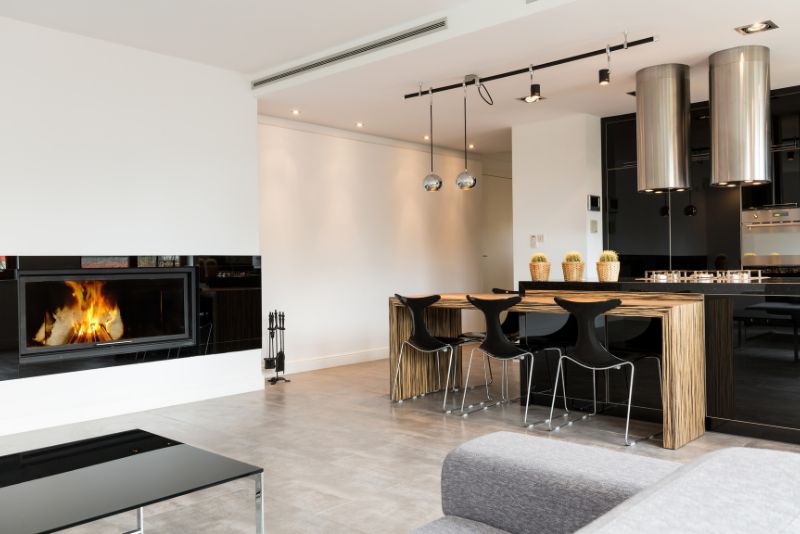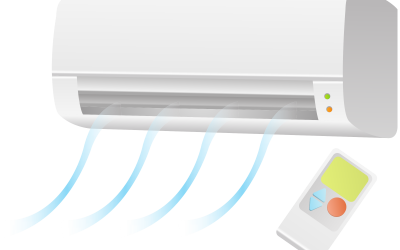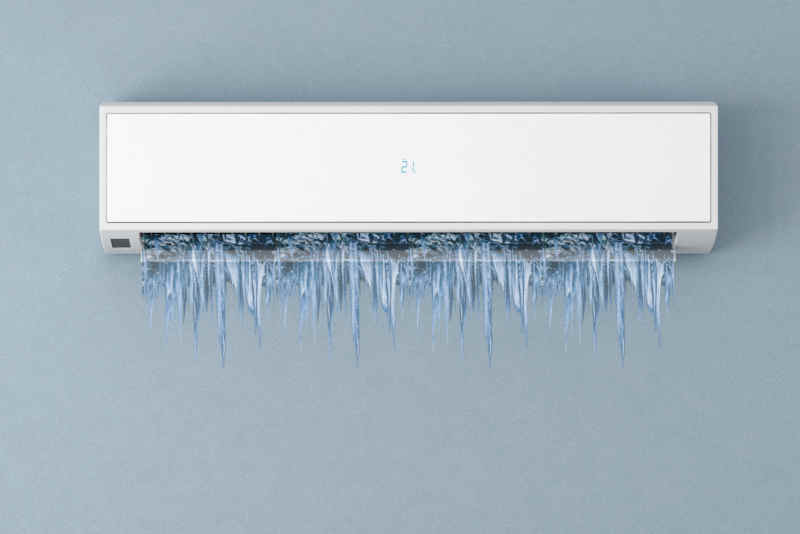Split System Vs Ducted Air Conditioning: An In-depth Comparison
Brisbane is no stranger to hot weather. With average daily highs of 29°C throughout the entire summer season, the warmer months will inevitably make you sweat. What’s more, stifling heatwaves can hit in autumn and spring—weather-related discomfort isn’t just a summertime thing.
Combine that near-constant heat with rising electricity prices, and it’s little wonder residents are starting to reconsider their home cooling systems.
Most Australian households use a split system or ducted air-conditioning, which typically offer the best bang for your buck.
But which air-conditioning solution works best?
There’s no set-in-stone answer. The ideal option depends on your home layout, budget, and personal needs.
In this post, we’ll cover split systems and ducted air-conditioning in detail, explaining how they work and outlining the key pros and cons. We’ll also answer a few of the most commonly asked questions to help you pinpoint the best option for you.
Split Systems
The split system, as the name suggests, is a type of air-conditioning system split into two separate units.
These cost-effective solutions have a low initial purchase price and work best at cooling (or heating) one particular room.
How do split systems work
The most visible component is the evaporative heat exchange unit, which sits on an interior wall and blows cold air around the room. Using a remote control, the householder can tweak various settings, from timers to turbo mode and fan rotation.
Sitting outside the building is the condensing heat exchanger unit. This component, which is more than double the size of the interior unit, cools hot air through a compressor and condenser.
If you’ve ever noticed large box-like appliances outside a house or apartment, there’s a good chance it’s the outer half of a split system.
Advantages of split systems
The most alluring advantage of a split system is its low purchase price. A brand new split system will only set you back a few grand, which is significantly cheaper than a comprehensive ducted air-con solution.
The installation process is also fairly straightforward. A skilled technician could get a split system up and running in a single day, thus causing minimal disruption to your home.
Furthermore, split systems are highly efficient at cooling a relatively small room. Homeowners who only need to cool a small portion of their property will find the split system the most financially advantageous solution, both in terms of the installation and the on-going running costs.
Plus, a split system is sometimes your only option. If you don’t have sufficient roof space or underfloor access in your home, you can rule out the ducted system straight away.
Disadvantages of split systems
While the split system is superb at cooling one room, it won’t create a comfortable temperature across an entire house.
The system simply isn’t powerful enough to cool multiple areas simultaneously, so the homeowner will have to install several units if they want to cool their entire house.
These extra units and the associated installation costs suddenly make the split system less attractive. While multi-split air-conditioning systems, which share several internal units with one external unit, can reduce costs, a ducted system may still offer better value.
For example, a large suburban home could need up to 8 internal units to maintain a comfortable, evenly spread temperature. That would undoubtedly cost more than a ducted system to purchase and install.
Finally, even though modern split systems are remarkably quiet, they still make more noise than the virtually silent ducted system.
Ducted systems
The ducted system channels cool (or warm) air around the house through a series of ducts connected to a central unit.
While the installation costs can be high, the ducted system effectively cools multiple rooms simultaneously. Therefore, it’s often a better option for homeowners who want a widespread cooling solution.
How do ducted systems work?
Instead of installing the unit on the wall, a technician puts the central unit in the roof space of your home (or sometimes beneath the floor). This central unit features an internal fan coil, which creates cold air that gets pumped through a network of ducts.
Although these ducts terminate in several sections of the house, there’s no need to blast cool air into every room at once. Most ducted systems come with a zoning feature, which lets the householder determine specific areas to heat or cool.
Advantages of a ducted system
A ducted air-conditioning system offers an energy-efficient solution for homeowners looking to cool a large property. While split systems are only effective in one room, ducted air-conditioning simultaneously covers multiple areas or rooms.
Zoning control further enhances efficiency by allowing the occupant to set automatic times for specific rooms. This set-it-and-forget-it configuration cools specific areas at optimal times of the day, thus reducing your quarterly electricity bill.
The energy-efficient approach also reduces wear and tear on the central unit, thus lowering on-going maintenance costs.
Furthermore, ducted air-con creates virtually zero noise, a massive boon for light sleepers and sound-sensitive householders alike.
If home aesthetics are a top priority, ducted is the preferred option. The sleek, streamlined design has no unsightly external or internal units (the central unit is hidden in the roof).
All these advantages make ducted the more sought-after system overall. As a result, it’ll add substantial resale value to your home—you could get a sizeable chunk of the investment back when you sell.
While the ducted system is widely regarded as a premium air-conditioning solution, it can sometimes work out cheaper, too. Ducted air-conditioning will cost less than installing five or more separate split systems, which could be necessary to cover a large property.
Disadvantages of ducted systems
The big downside to the ducted system is cost. Expect to fork out tens of thousands of dollars; the total bill will depend on your requirements and your home’s unique layout.
Ducted is considerably more expensive due to the complex installation process involved. Instead of bolting two units on either side of a wall (per the split system), the technician must install a vast network of ducts throughout the house. That could take a small team of skilled tradesmen several days to complete.
As a result, most homeowners prefer to get a ducted system installed during the initial construction phase or a large-scale renovation. Retrofitting an existing structure is possible but certainly more costly.
Furthermore, a ducted system isn’t viable for many Australian homes, especially smaller dwellings like apartments and townhouses. You need sufficient roof space and a suitable layout for all the various ducts.
How do you choose between ducted or split systems?
So should you spring for a comprehensive ducted system for whole-house cooling or make do with a split system (or two) in key areas of the home?
There’s no objectively better option. The ideal system boils down to your home layout, budget, and personal preferences.
If you’ve got sufficient disposable income and want an evenly spread air-conditioning system to cool a large suburban home, ducted air-con might be the best choice. Enhanced energy efficiency, superior aesthetics, near-silent operation, zoning control, and added resale value help make it a more attractive option.
However, if you’ve got a relatively small home, a strategically placed split system can often be enough to remain comfortable through our sweltering hot Brisbane summers. A powerful unit in your open-plan living room and kitchen, plus a smaller one in the bedroom, could be all you need to beat the heat. Of course, a split system is definitely the way to go if you only need to cool one additional room.
One or two split systems will cost substantially less than a ducted air-conditioning network. If that’s all you need to stay cool in summer, there’s no point spending more than you have to.
How Advanced Climate Solutions Can Help
Now you know the difference between ducted and split systems, it’s time to decide which option works best for you.
But how can you determine whether a few strategically placed split systems will be enough to cool your home? Or whether a ducted system is viable for the layout of your house?
These are complex questions only a professional technician can answer.
If you’re interested in upgrading your air-conditioning system, get in touch with the team at Advanced Climate Solutions today.
With over 12 years of experience installing split systems and ducted air-conditioning in the Brisbane and Bayside area, we’ve got an in-depth understanding of what’s required to combat the harsh Queensland climate.
One of our friendly, fully-qualified technicians can assess your individual needs and provide a free personalised quote on the most appropriate solution for you.
FAQ
If you still have questions regarding the split system versus ducted debate, consult the following FAQ.
Split System Vs Ducted Air Conditioning: Which is cheaper to install?
A typically split system costs $2,000-$3,000, while ducted air-con can run $10,000 or more. However, ducted may work out cheaper when you need to cover a large area—i.e., you’d need to install five split systems to cool the desired space.
Split System Vs Ducted Air Conditioning: Which is cheaper to run?
Ducted air-conditioning is generally cheaper to run than a split system. The savings become even greater when you use scheduled timers and zoning control to cool specific areas as needed.
Split System Vs Ducted Air Conditioning: Which is cheaper to maintain?
Ducted air-conditioners are usually cheaper to maintain, as zoning control lets you minimise use to reduce wear and tear. However, if used sparingly and with a timer, a split system can sometimes be cheaper to maintain as the technician won’t need to access the roof for servicing.
Split System Vs Ducted Air Conditioning: Which will add more value to your home?
Ducted air-conditioners add more value than split systems as they’re more desirable for everyday home buyers. Nonetheless, you shouldn’t expect to recuperate the entire investment when selling your home.
Split System Vs Ducted Air Conditioning: Which system performs better?
Ducted air-conditioning performs better. It’s quieter, covers a larger area, and cools each room more evenly than a split system. Nonetheless, in many situations, a modern split system will be perfectly adequate for your needs.




